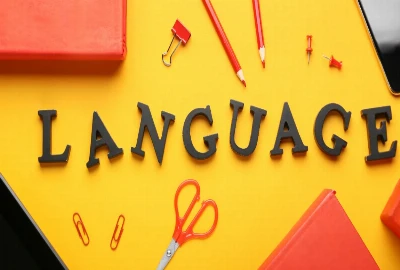Ambient Fandom: When the Story is All Around You, All the Time

The evolution from passive viewing to active participation
Once upon a time, fandom was a weekend affair—an episode on TV, a convention, or maybe a forum post. Today, that model feels archaic. Ambient fandom has emerged as a state where stories, characters, and worlds exist not in isolated moments but as an ongoing, lived experience. The lines between consuming and participating blur; fans aren’t just watching Doctor Who or The Witcher, they’re living in those universes—through memes, TikToks, digital art, and shared in-jokes that flow across platforms.
Always-on storytelling and the algorithmic push
Social media algorithms reward content that sparks engagement, and fandom thrives on exactly that. TikTok edits, fanfic recommendations, and theory threads don’t just circulate—they accumulate. The more you engage, the more you’re surrounded. Suddenly, your feed becomes a narrative extension of your favorite world. The algorithm doesn’t let the story fade; it amplifies it, creating an environment where fiction becomes ambient—a low hum in the background of your digital life.
Fandom as cultural atmosphere
In ambient fandom, the story isn’t confined to episodes or releases—it’s in your Spotify playlist, your Reddit recommendations, even your sense of humor. This immersive cultural atmosphere is both exciting and inescapable. You’re not just part of a fandom; you’re breathing it. Entertainment has evolved from being something you consume to something that quietly shapes your worldview, friendships, and creative output.
How Digital Environments Shape Modern Fandom

The rise of participatory platforms
Social media platforms like Twitter (X), TikTok, and Discord have reshaped how fandom functions. They’re not just discussion hubs—they’re collaborative spaces where fans remix, reinterpret, and redistribute the story. The result? A decentralized storytelling ecosystem. Even casual fans become co-authors, creating fan edits, theory videos, or alternate storylines that feed into the larger cultural narrative.
Fandom’s geography of platforms
Each platform contributes differently to ambient fandom. TikTok drives viral recontextualization—short clips, audio memes, or “core” aesthetics. Reddit and Tumblr preserve deep lore discussions and longform analysis. Discord communities maintain intimate, ongoing connections that make fandom feel like home. Together, these ecosystems create an omnipresent digital backdrop that ensures the fandom never truly “turns off.”
The aesthetics of being online
A new visual and emotional language has evolved within digital fandoms. The aesthetics—neon edits, vaporwave remixes, AI art crossovers—are extensions of both the story and the culture surrounding it. Even aesthetic choices like filters or song snippets become signals of belonging, letting users identify fellow fans without saying a word. Digital fandom is now less about specific works and more about shared emotional signatures.
Immersion by Design: How Stories Become Environments

Worldbuilding as lifestyle
Modern franchises understand that audiences crave worlds, not just narratives. Whether it’s the Marvel Cinematic Universe or The Last of Us, creators are engineering environments that fans can inhabit. This worldbuilding extends beyond plot—it becomes aesthetic, emotional, and participatory. Every soundtrack, Easter egg, and teaser builds scaffolding for fans to construct their own meaning.
Narrative fragments in daily life
Ambient fandom thrives because fragments of a story find their way into the mundane. You’re scrolling through TikTok and see an edit of Arcane that recontextualizes a single line. You see AI art of Hogwarts in cyberpunk style. You hear a slowed reverb version of a character’s theme on Spotify. These fragments turn the story into an atmosphere, something absorbed through repetition and emotion rather than direct consumption.
Designing for engagement beyond the screen
Storytellers now design with ambient presence in mind. Alternate reality games (ARGs), interactive marketing, and transmedia projects all aim to keep audiences engaged between major releases. The result is an emotional continuity—fans remain connected to the world even when no new content drops. This design philosophy transforms fandom into a lifestyle choice, not just a pastime.
The Psychology of Constant Connection

The emotional loop of belonging
Ambient fandom leverages a basic human desire: connection. When you’re surrounded by a fandom’s imagery and conversation, it creates a sense of belonging that’s deeply emotional. Even casual engagement—liking a meme or sharing a quote—feeds that loop. The dopamine reward system that governs social media behavior aligns perfectly with the emotional rhythms of fandom.
Parasocial intimacy and story as identity
When stories surround us 24/7, characters start feeling like friends. This parasocial closeness fosters emotional investment, making fans more likely to stay engaged. The story becomes an extension of personal identity—you’re not just a fan of Star Wars; you’re part of the Jedi ethos. Fandom becomes a personal brand, visible through online behavior, fashion, and language.
The cost of never disconnecting
Yet, constant immersion can create fatigue. The same atmosphere that fosters belonging can also become overwhelming. With fandom bleeding into every digital corner, it’s harder to distinguish between personal space and narrative space. The story never ends—and that’s both thrilling and exhausting. Recognizing this duality is essential to maintaining a healthy relationship with media.
Participatory Worlds: Fans as Co-Creators

From fanfiction to franchise impact
Fan labor has evolved from hobbyist enthusiasm to creative influence. Some of today’s most successful franchises—Star Trek, Good Omens, The Witcher—actively engage with fan creations. Studios recognize that participatory culture enhances longevity. When fans write, draw, and remix, they generate an infinite stream of microcontent that sustains the story’s life between official releases.
Social storytelling and collaborative canon
Platforms like AO3, TikTok, and YouTube host sprawling fan ecosystems where alternate interpretations coexist with official canon. Fans build emotional continuity through what might be called “social storytelling”—collaborative, nonlinear narrative weaving. Even when creators aren’t involved, fans act as cultural stewards, shaping the mythos through collective imagination.
The blurred line between audience and author
In ambient fandom, everyone’s a potential storyteller. The barrier to entry has vanished; creating a viral fan edit or AI-inspired scene is as easy as reposting a meme. This democratization of authorship redefines the relationship between art and audience. Fandom isn’t passive; it’s a living co-authorship of culture itself.
The Future of Ambient Fandom: Living in Fictional Realities

The merging of digital and physical experiences
As AR (augmented reality) and VR technologies mature, fandom is extending into physical space. Imagine walking through your city and seeing virtual Easter eggs tied to your favorite universe. Theme parks, branded pop-ups, and virtual events already blur the boundary between reality and story. The future promises a fully ambient form of fandom—fiction layered onto daily existence.
The rise of ambient storytelling ecosystems
Media companies are beginning to think in terms of ecosystems rather than franchises. The goal isn’t just to tell a story—it’s to build a self-sustaining cultural presence. With AI personalization, interactive media, and algorithmic distribution, each fan’s experience of the same universe becomes unique and continuous. The story, in essence, becomes a companion.
Ethics and sustainability of constant narrative presence
As exciting as this sounds, there are ethical questions about ownership, consent, and cognitive overload. If fandom becomes inescapable, where does the individual end and the cultural machine begin? Sustainable fandom means balancing immersion with agency—choosing when to engage and when to log off. The healthiest ambient fandoms will be those that celebrate community without colonizing every corner of attention.




